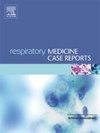A seeded seroma transforming into tract Metastases: Rare complications of image-guided pleural biopsies
IF 0.7
Q4 RESPIRATORY SYSTEM
引用次数: 0
Abstract
Seromas are rare complications of ultrasound-guided pleural biopsies, and have not been described to be seeded with tract metastases before. We describe a case where a post-pleural biopsy seroma appeared to be resolving, but developed into a chest wall metastasis over a period of five months. This was an 84-year-old lady undergoing investigation for a malignant pleural effusion, and underwent a left pleural aspiration and ultrasound-guided pleural biopsies in the same sitting. The seroma presented as a painful swelling immediately after pleural biopsy, and was initially conservatively managed due to patient preference. Drainage of the effusion was performed two months after the procedure, and alleviated the patient's breathlessness but did not alter the resolution of the seroma. Serial ultrasound images illustrate the gradual changes in morphology from a hypoechoic collection to an echogenic, organized lesion with lobulated margins. In this case, despite the shrinking size of the original lesion, the patient's persistent pain and atypical ultrasound features of a solid lesion were suspicious for malignant transformation. Chest wall biopsy confirmed metastatic seeding five months after initial intervention. This case highlights the need for heightened surveillance for the development of tract seeding in patients with malignant effusion and seroma after pleural intervention. Delay in chest drainage may have contributed to the poor outcome.
一种种子性浆肿转变为尿道转移:影像引导下胸膜活检的罕见并发症
浆液瘤是超声引导下胸膜活检的罕见并发症,以前没有报道过有泌尿道转移的病例。我们描述一个病例,胸膜活检后的血肿似乎是解决,但发展成胸壁转移超过5个月的时间。这是一位84岁的女性,因恶性胸腔积液接受检查,并在同一位接受了左侧胸腔抽吸和超声引导下的胸腔活检。浆肿在胸膜活检后立即表现为疼痛的肿胀,由于患者的偏好,最初采用保守治疗。术后2个月引流积液,缓解了患者的呼吸困难,但没有改变血肿的溶解。连续超声图像显示形态学逐渐变化,从低回声集合到回声,有组织的分叶边缘病变。本例中,尽管原病变缩小,但患者持续疼痛,超声表现不典型,实性病变可疑为恶性转化。胸壁活检证实转移播种5个月后,初步干预。本病例强调需要加强监测发展的恶性积液和血肿患者胸膜干预后的路播种。延迟胸腔引流可能是导致预后不良的原因之一。
本文章由计算机程序翻译,如有差异,请以英文原文为准。
求助全文
约1分钟内获得全文
求助全文
来源期刊

Respiratory Medicine Case Reports
RESPIRATORY SYSTEM-
CiteScore
2.10
自引率
0.00%
发文量
213
审稿时长
87 days
 求助内容:
求助内容: 应助结果提醒方式:
应助结果提醒方式:


